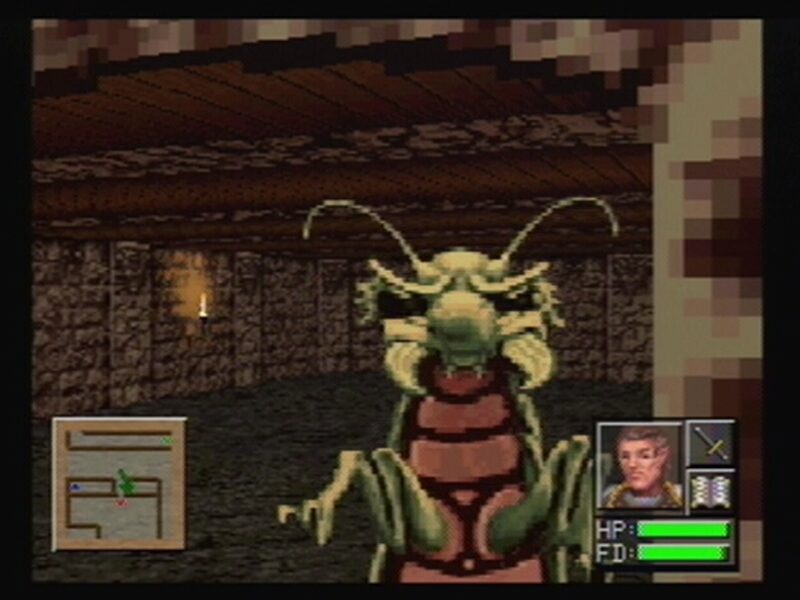Retro Replay Review
Gameplay
Slayer’s core gameplay loop centers on exploring procedurally generated dungeons while leveraging the AD&D 2nd Edition license to its fullest. Players start by creating a familiar character—whether a stalwart human fighter, cunning elf rogue, or mystical half-orc wizard—each with unique abilities and equipment. As you descend through levels of twisting corridors, you’ll encounter traps, secret doors, and hordes of classic monsters that feel straight out of the tabletop experience.
(HEY YOU!! We hope you enjoy! We try not to run ads. So basically, this is a very expensive hobby running this site. Please consider joining us for updates, forums, and more. Network w/ us to make some cash or friends while retro gaming, and you can win some free retro games for posting. Okay, carry on 👍)
Combat in Slayer strikes a balance between real-time action and RPG strategy. You swing swords, cast fireballs, and loosed arrows in fluid first-person combat, but you must also manage hit points, spell slots, and stamina. The rules faithfully adapt AD&D mechanics: strength scores determine melee damage, intelligence affects spell effectiveness, and saving throws can be the difference between life and death. This blend keeps encounters tense and rewarding.
One of Slayer’s standout features is the ability to customize dungeon parameters—size, monster density, treasure frequency, and difficulty. This slider-based system lets veterans crank up the challenge for high-stakes runs or dial it back for a more relaxed dungeon delve. With each playthrough offering new layouts, enemy placements, and loot pools, the game achieves impressive replayability. It’s a sandbox for dungeon masters and players alike, offering endless experimentation.
Graphics
Visually, Slayer embraces a nostalgic yet serviceable early-’90s aesthetic, reminiscent of classic dungeon crawlers. The textures are functional rather than flashy—stone walls, wooden doors, and torch-lit chambers—but they contribute to an immersive medieval atmosphere. Monster sprites range from snarling goblins to towering beholders, each rendered with enough detail to identify threat levels at a glance.
Lighting effects play a crucial role in setting the mood. Flickering torches cast dynamic shadows, and deeper dungeon levels introduce bioluminescent fungi or eerie green glows around cursed items. While the polygon counts and texture resolutions won’t rival modern AAA titles, the game’s artistic direction communicates danger and discovery effectively. You’ll find yourself pausing at every corridor junction, waiting for the next sound cue or shadow to materialize.
The user interface is straightforward: a compact status bar displays hit points, spell points, armor class, and inventory slots. Menus slide in cleanly without obstructing the view, and item icons are instantly recognizable—important when you’re scrambling to equip a healing potion before being swarmed. Though it lacks high-definition polish, Slayer’s visuals contribute to a coherent, atmospheric experience that suits its tabletop roots.
Story
Slayer doesn’t spoon-feed a sprawling narrative; instead, it plants the seeds of a classic high-fantasy quest and lets you fill in the blanks. The opening premise is minimal—a village besieged by an ancient evil lurking beneath the earth. You choose your hero, gather your gear, and venture downward in search of the source of corruption. From there, every dungeon level uncovers cryptic lore through scroll fragments, magical runes, and NPC encounters.
Dialogue and world-building emerge organically. Townsfolk you meet between dungeon runs offer rumors of a hidden citadel, black-market merchants sell cursed relics with ominous descriptions, and defeated bosses drop journals hinting at their origins. This environmental storytelling rewards careful exploration: backtracking through previously “cleared” areas can reveal locked rooms once you’ve obtained the right keys or spells.
While there’s no branching narrative with multiple endings, Slayer’s randomized encounters and adjustable difficulty ensure that no two story beats feel identical. The emergent narrative—your triumphs, near-deaths, and narrow escapes—becomes as compelling as any scripted plot. For fans of sandbox storytelling who enjoy charting their own heroic journey, this approach hits the mark.
Overall Experience
Slayer delivers a satisfying fusion of tabletop mechanics and first-person dungeon crawling. Customizable difficulty and truly random dungeons mean that each session feels fresh, whether you’re hunting for legendary artifacts or sheer survival. The faithful adaptation of AD&D 2nd Edition rules offers depth for RPG purists, while the real-time combat keeps the action moving at a brisk pace.
There are occasional rough edges—minor pathfinding hiccups for summoned creatures, a steep learning curve for newcomers unfamiliar with AD&D terminology, and visuals that won’t wow those demanding ultra-realistic graphics. However, these are largely cosmetic or mechanical quirks that don’t detract from the core fun. For players craving dungeon delves that feel both nostalgic and endlessly unpredictable, Slayer hits its mark.
Ultimately, Slayer is a must-try for tabletop RPG enthusiasts and dungeon-crawler fans alike. Its blend of classic AD&D rules, customizable challenges, and atmospheric exploration offers hours of compelling gameplay. Whether you’re forging through one deep dive or dozens of randomized runs, Slayer stands out as a robust, replayable RPG experience that embraces its pen-and-paper heritage.
 Retro Replay Retro Replay gaming reviews, news, emulation, geek stuff and more!
Retro Replay Retro Replay gaming reviews, news, emulation, geek stuff and more!








Reviews
There are no reviews yet.